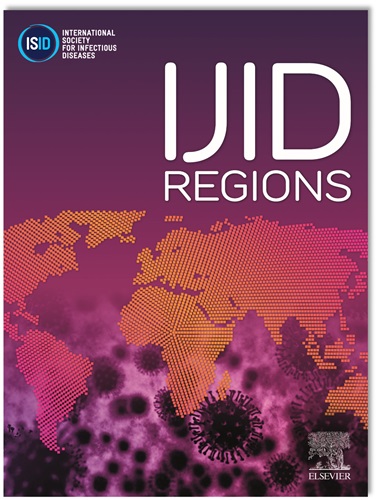Climate change-driven vector-borne diseases spread to temperate climate territories: The frying pan theory.
IF 4.8
2区 医学
Q1 INFECTIOUS DISEASES
引用次数: 0
Abstract
Introduction
Recently, as the effects of anthropogenic climate change (ACC) become evident, vector-borne diseases (VBD) are spreading and establishing in temperate regions of the world. We investigated whether these two phenomena are related. We hypothesized that ACC has turned many areas, previously considered “unsuitable” for sustaining VBD cycles, into “suitable” ones. The hypothesis assumes that VBD pathogens have historically been able to reach temperate areas, but only started to thrive there under the influence of ACC, hence their current spread. To support this hypothesis, which we tentatively named “The frying pan theory”, we have chosen the recent spread of West Nile virus (WNV) in Spain as a model of study.
Methods & Materials
The study area was Southern Spain, now endemic for WNV. We analyzed eighteen years (2003 to 2020) of data on WNV seroprevalence in common coots and horses and compared them statistically with annual series of climate variables (temperature, pluviometry, etc). We also performed phylogenetic analyses using WNV sequences from samples of mosquitoes, birds and horses, collected in the area up to 2022, and analyzed the pathogenicity of representative Spanish WNV isolates from this area and period in a mouse model.
Results
Coots’ and horses’ seroprevalences exhibited a biphasic curve indicating at least two epizootic waves, one before and another after 2010. Seroprevalence in coots correlated with maximum winter temperature and average spring temperature. Horses’ seroprevalence correlated positively with average minimum annual temperature and the number of rain days per year and negatively with total annual precipitations. Phylogenetic analyses revealed at least six independent introductions of WNV into Southern Spain during the study period. Some introductions succeeded in establishing in the area and spreading to neighboring regions, while others did not. No significant changes in the pathogenicity of the strains studied were observed.
Discussion
Long-term comparisons between annual variation of pathogen exposure and climate variables allow forecasting VBD trends. In this regard, higher minimum temperatures are among the ACC trends that may favor vector biology and hence VBD. Our data support that VBD pathogens like WNV can spread to new territories, but they will only establish their cycles successfully if they find suitable conditions. In Spain, competent WNV hosts (birds) and vectors (Culex mosquitoes), have always been present, and the virus has likely been introduced occasionally since long, e.g. by bird migrations. However, local WNV cycles would only be established if these necessary ingredients are “heated” by ACC much like well-cooked bacon and eggs may result only if heated in a frying pan.
Conclusion
The data obtained support our hypothesis, which may also apply to most of Europe and other temperate areas of the world, not only for WNV but also for many other VBD.
求助全文
约1分钟内获得全文
求助全文
来源期刊
CiteScore
18.90
自引率
2.40%
发文量
1020
审稿时长
30 days
期刊介绍:
International Journal of Infectious Diseases (IJID)
Publisher: International Society for Infectious Diseases
Publication Frequency: Monthly
Type: Peer-reviewed, Open Access
Scope:
Publishes original clinical and laboratory-based research.
Reports clinical trials, reviews, and some case reports.
Focuses on epidemiology, clinical diagnosis, treatment, and control of infectious diseases.
Emphasizes diseases common in under-resourced countries.

 求助内容:
求助内容: 应助结果提醒方式:
应助结果提醒方式:


